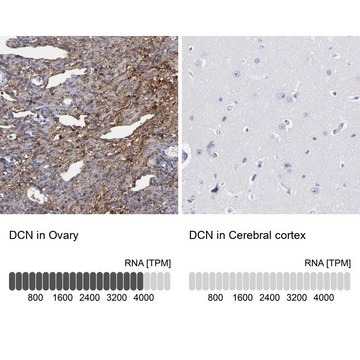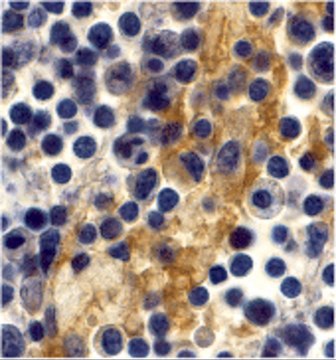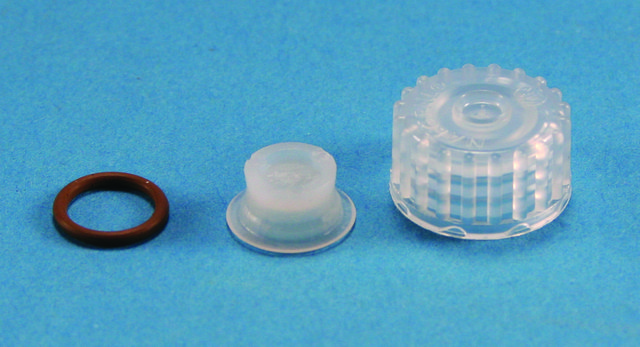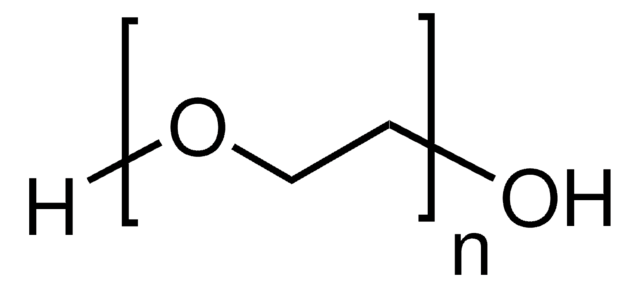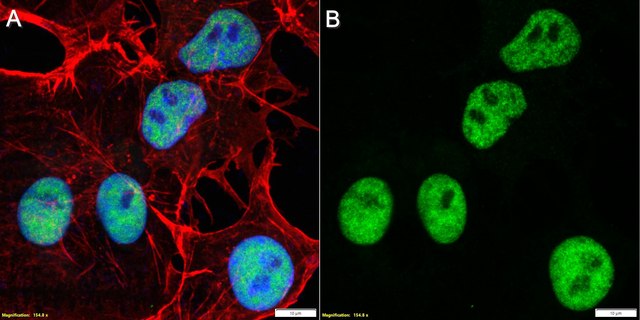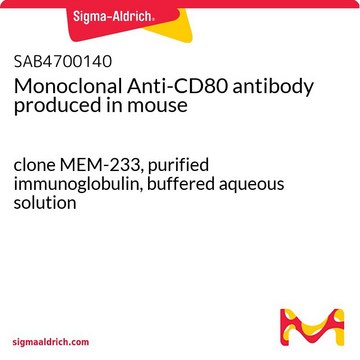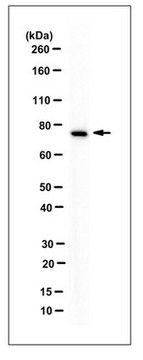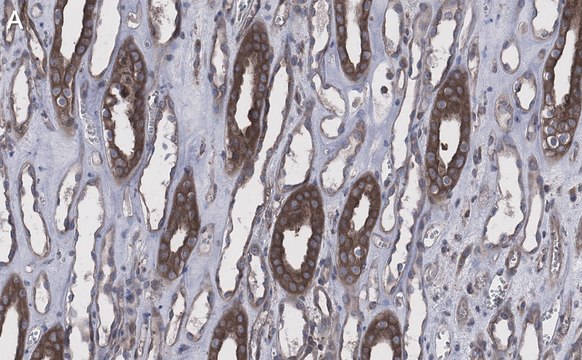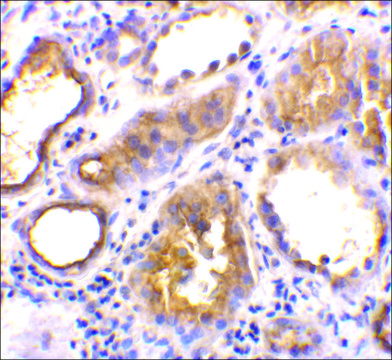推荐产品
生物来源
mouse
质量水平
偶联物
unconjugated
抗体形式
purified immunoglobulin
抗体产品类型
primary antibodies
克隆
polyclonal
表单
buffered aqueous solution
分子量
antigen ~45.8 kDa
种属反应性
human
技术
western blot: 1 μg/mL
NCBI登记号
UniProt登记号
运输
dry ice
储存温度
−20°C
靶向翻译后修饰
unmodified
基因信息
human ... CD209(30835)
一般描述
Cluster of differentiation 209 (CD209), also known as dendritic cell-specific intercellular adhesion molecule-3-grabbing non-integrin (DC-SIGN), is part of the innate immune system. It is expressed by intestinal dendritic cells and alveolar macrophages. The gene encoding this C-type lectin contains seven exons and is localized on human chromosome 19p13.2.
This gene encodes a transmembrane receptor and is often referred to as DC-SIGN because of its expression on the surface of dendritic cells and macrophages. The encoded protein is involved in the innate immune system and recognizes numerous evolutionarily divergent pathogens ranging from parasites to viruses with a large impact on public health. The protein is organized into three distinct domains: an N-terminal transmembrane domain, a tandem-repeat neck domain and C-type lectin carbohydrate recognition domain. The extracellular region consisting of the C-type lectin and neck domains has a dual function as a pathogen recognition receptor and a cell adhesion receptor by binding carbohydrate ligands on the surface of microbes and endogenous cells. The neck region is important for homo-oligomerization which allows the receptor to bind multivalent ligands with high avidity. Variations in the number of 23 amino acid repeats in the neck domain of this protein are rare but have a significant impact on ligand binding ability. This gene is closely related in terms of both sequence and function to a neighboring gene (GeneID 10332; often referred to as L-SIGN). DC-SIGN and L-SIGN differ in their ligand-binding properties and distribution. Alternative splicing results in multiple variants.
免疫原
CD209 (NP_066978.1, 1 a.a. ~ 404 a.a) full-length human protein.
Sequence
MSDSKEPRLQQLGLLEEEQLRGLGFRQTRGYKSLAGCLGHGPLVLQLLSFTLLAGLLVQVSKVPSSISQEQSRQDAIYQNLTQLKAAVGELSEKSKLQEIYQELTQLKAAVGELPEKSKLQEIYQELTRLKAAVGELPEKSKLQEIYQELTWLKAAVGELPEKSKMQEIYQELTRLKAAVGELPEKSKQQEIYQELTRLKAAVGELPEKSKQQEIYQELTRLKAAVGELPEKSKQQEIYQELTQLKAAVERLCHPCPWEWTFFQGNCYFMSNSQRNWHDSITACKEVGAQLVVIKSAEEQNFLQLQSSRSNRFTWMGLSDLNQEGTWQWVDGSPLLPSFKQYWNRGEPNNVGEEDCAEFSGNGWNDDKCNLAKFWICKKSAASCSRDEEQFLSPAPATPNPPPA
Sequence
MSDSKEPRLQQLGLLEEEQLRGLGFRQTRGYKSLAGCLGHGPLVLQLLSFTLLAGLLVQVSKVPSSISQEQSRQDAIYQNLTQLKAAVGELSEKSKLQEIYQELTQLKAAVGELPEKSKLQEIYQELTRLKAAVGELPEKSKLQEIYQELTWLKAAVGELPEKSKMQEIYQELTRLKAAVGELPEKSKQQEIYQELTRLKAAVGELPEKSKQQEIYQELTRLKAAVGELPEKSKQQEIYQELTQLKAAVERLCHPCPWEWTFFQGNCYFMSNSQRNWHDSITACKEVGAQLVVIKSAEEQNFLQLQSSRSNRFTWMGLSDLNQEGTWQWVDGSPLLPSFKQYWNRGEPNNVGEEDCAEFSGNGWNDDKCNLAKFWICKKSAASCSRDEEQFLSPAPATPNPPPA
生化/生理作用
Cluster of differentiation 209 (CD209) mediates viral infection and activates immune responses. It activates T-cells and aids in their growth. The protein recognizes various pathogens and triggers immunosuppressive reactions. It is involved in the innate immune system. It recognizes numerous evolutionarily divergent pathogens ranging from parasites to viruses that have severe health impacts on humans. CD209/ DC-SIGN mediates the entry of various viruses such as dengue virus, human immunodeficiency virus (HIV), Ebola virus and human cytomegalovirus into the human cells. CD209 acts as an alternative receptor for SARS-CoV-2, a causative agent for the novel coronavirus disease 2019 (COVID-19).
外形
Solution in phosphate buffered saline, pH 7.4
未找到合适的产品?
试试我们的产品选型工具.
储存分类代码
10 - Combustible liquids
WGK
WGK 1
闪点(°F)
Not applicable
闪点(°C)
Not applicable
法规信息
新产品
Human DC-SIGN binds specific human milk glycans.
Noll AJ, et al.
The Biochemical Journal (2016)
The activation of B cells enhances DC-SIGN expression and promotes susceptibility of B cells to HPAI H5N1 infection.
Na-Ek P, et al.
Biochemical and Biophysical Research Communications, 490(4), 1301-1306 (2017)
Edit I Buzás et al.
Autoimmunity, 39(8), 691-704 (2006-12-21)
The immune system is a complex functional network of diverse cells and soluble molecules orchestrating innate and adaptive immunity. Biological information, to run these intricate interactions, is not only stored in protein sequences but also in the structure of the
The association between CD209 gene polymorphisms and pulmonary tuberculosis susceptibility: a meta-analysis.
Yi L, et al.
International Journal of Clinical and Experimental Pathology, 8(10), 12437-12437 (2015)
Boonrat Tassaneetrithep et al.
The Journal of experimental medicine, 197(7), 823-829 (2003-04-12)
Dengue virus is a single-stranded, enveloped RNA virus that productively infects human dendritic cells (DCs) primarily at the immature stage of their differentiation. We now find that all four serotypes of dengue use DC-SIGN (CD209), a C-type lectin, to infect
我们的科学家团队拥有各种研究领域经验,包括生命科学、材料科学、化学合成、色谱、分析及许多其他领域.
联系技术服务部门
